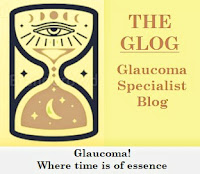Magnetic resonance imaging (MRI) is currently not a standard investigation in most glaucoma patients. However, a number of studies have shown striking central nervous system (CNS) changes in MRI studies in such patients.
The advanced MRI used in glaucoma brain detection mainly involves the following 7 types of methods:
1. MRI quantitative morphometry;
2. Blood oxygenation level dependent functional MRI (BOLD-fMRI);
3. Diffusion-weighted imaging (DWI);
4. Magnetic resonance spectroscopy (MRS);
5. Diffusion tensor imaging (DTI);
6. Diffusion kurtosis imaging (DKI); and
7. Magnetization transfer imaging (MTI).
MRI quantitative morphometry:
It is now possible to image brain structure, volume, and microstructural damage.
The techniques for quantitative evaluation of brain morphology can be divided into 2 types: voxel-based morphometry (VBM), and surface-based morphometry (SBM).
The VBM technique uses a statistical method to allocate the probability that a voxel is occupied by gray matter, whereas SBM determines the vertices defining the interface surface of gray matter cerebrospinal fluid (CSF) and gray and white matter, and uses these vertices to estimate the thickness of the cerebral cortex with submillimeter accuracy.
Using MRI VBM, Hernowo et al. found that the volume of all structures of the visual pathway in glaucoma patients was significantly reduced, including the optic nerve, optic chiasm, optic tract, LGN, and optic radiation. The volumetric MRI techniques have observed a decrease in occipital surface area or visual cortex volume in both hemispheres of glaucoma patients.
In terms of the severity of glaucoma, Wang et al. used T1 weighted MRI images to conduct VBM and SBM analysis on the whole brain. They found that in patients with glaucoma, the left LGN volume was negatively correlated with the bilateral optic cup disk ratio, the right LGN volume was positively correlated with the average deviation of the right VF, and the right V1 cortical thickness was negatively correlated with the right optic cup disk ratio. In patients with primary open angle glaucoma (POAG), these changes in brain visual structure can reflect the clinical severity of glaucoma.
Blood oxygenation level-dependent functional MRI (BOLD-fMRI):
The BOLD effect is the most commonly used method to obtain information related to brain function. It is an indirect measurement of cortical activity. The BOLD-fMRI is a non-invasive imaging method that uses deoxyhemoglobin as the natural contrast agent in vivo to monitor blood oxygen levels of the brain in real-time.
Different Rs-fMRI studies of glaucoma have shown decreased connectivity in regions associated with vision.
POAG results in decreased cortical activity in the visual cortex, including the central region. Primary angle closure glaucoma (PACG) showed decreased activity in the bilateral secondary visual cortex (BA18).
Reduction of BOLD activity may also involve many areas of non-visual pathways.
PACG is mainly related to frontal lobe dysfunction. Chen et al. used the ReHo method and found that PACG was involved in abnormal spontaneous brain activities in multiple brain regions, such as the left fusiform gyrus, left anterior cerebellar lobe, right frontotemporal space and right insula, bilateral middle occipital gyrus, and the right paracentral lobule.
Patients with PACG show abnormal spontaneous neural activity in the visual cortex, sensorimotor cortex, frontal lobe, frontal parietal lobe network, and the DMN. This indicates that the visual, cognitive, and emotional functions of individuals with PACG may be impaired.
Zhang et al. used Rs-fMRI to analyze the brains of patients with NVG and revealed dysfunction in the brain regions of the right romantic operculum, left antagonist cingulate and paracingulate gyri, left precuneus, and the right caudate. Peng et al. observed abnormal spontaneous activity in NVG patients in the right cuneus, right middle occipital gyrus, left cingulate gyrus, right precuneus, left medial frontal gyrus, right superior frontal gyrus, and left middle frontal gyrus. These abnormal changes in specific brain regions can be considered possible clinical indicators of NVG.
In terms of the severity of glaucoma, some researchers have observed that in mild and moderate cases of glaucoma, the primary visual cortex seems to be more affected than other advanced visual areas. For example, abnormal spontaneous neural activity in the left wedge, bilateral middle temporal gyrus, and the right prefrontal cortex have been shown to be associated with the severity of POAG.
At present, fMRI is a very interesting clinical research tool for understanding how glaucoma functionally affects the central nervous system; however, it still has some limitations. First, fMRI technology is based on the premise that neural networks are associated with anatomic known visual regions, but other neural network components which may be affected by glaucoma cannot be clearly defined. Second, fMRI signal has low-temporal resolution due to down-sampling and indirectly measures underlying neuronal activity.














.jpeg)






















